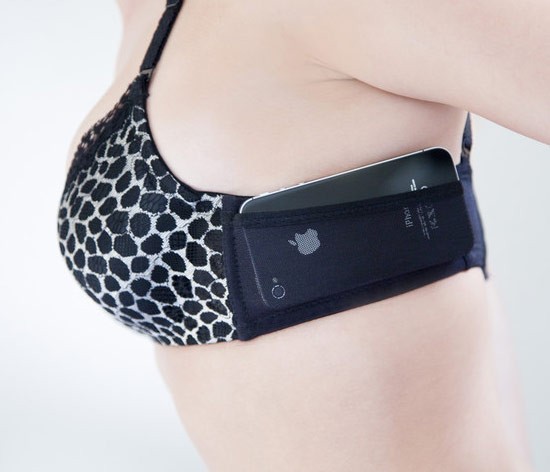Blootstellingsnormen voorgesteld in de Seletun Scientific statement
- Gegevens
-
Geschreven: dinsdag 01 oktober 2013 09:39
The Seletun Scientific Panel recommends global governments adopt the following exposure guidelines to protect public health and the health of future generations:
Lees meer...
‘Info’sessie Stichting tegen Kanker – uitgenodigde expert controversieel
- Gegevens
-
Geschreven: vrijdag 27 september 2013 09:30
 Op zaterdag 12 oktober 2013 organiseert de Stichting tegen Kanker in Gent een infovoormiddag over straling en kanker. Eén van de sessies gaat over elektromagnetische velden.
Op zaterdag 12 oktober 2013 organiseert de Stichting tegen Kanker in Gent een infovoormiddag over straling en kanker. Eén van de sessies gaat over elektromagnetische velden.
De expert die werd uitgenodigd voor deze sessie is Luc Verschaeve. Deze expert is echter niet onbesproken. Hij staat erom bekend schadelijke effecten op de gezondheid systematisch te ontkennen of minimaliseren, daar waar een steeds grotere groep wetenschappers deze effecten wel erkent. Prof. Verschaeve maakt er zich steeds gemakkelijk van af: de vele honderden studies die schadelijke effecten aantonen zouden allemaal van slechte kwaliteit zijn (het gaat nochtans om gepeerreviewde studies in wetenschappelijke vakbladen) en alle wetenschappers die waarschuwen voor schadelijkheid, hoe gerenommeerd ze ook zijn, weten eigenlijk niet waarover ze het hebben. Dit lijkt ons een zeer subjectieve manier van interpreteren.
Over de invloed die de bron van financiering op de resultaten en de kwaliteit van wetenschappelijke studies heeft Prof. Verschaeve het echter nooit. Nochtans is uitgewezen dat onderzoek gefinancierd door de telecom of wirelessindustrie significant (tot 9 maal) minder vaak schadelijk effecten vindt. Wellicht gaat Prof. Verschaeve daar liever niet op in, daar hij vroeger zelf onderzoek heeft gedaan gesponsord door Belgacom/Proximus, zoals in 2006 aan het licht werd gebracht door een onderzoeksjournaliste van het weekblad Humo.
Lees meer...
Casestudies: smartphone in BH dragen leidt tot borstkanker
- Gegevens
-
Geschreven: zaterdag 21 september 2013 09:16
 Studie verschenen in het wetenschappelijke tijdschrift 'Case Reports in Medicine':
Studie verschenen in het wetenschappelijke tijdschrift 'Case Reports in Medicine':
"Breast cancer occurring in women under the age of 40 is uncommon in the absence of family history or genetic predisposition, and prompts the exploration of other possible exposures or environmental risks.
We report a case series of four young women—ages from 21 to 39—with multifocal invasive breast cancer that raises the concern of a possible association with nonionizing radiation of electromagnetic field exposures from cellular phones. All patients regularly carried their smartphones directly against their breasts in their brassieres for up to 10 hours a day, for several years, and developed tumors in areas of their breasts immediately underlying the phones. All patients had no family history of breast cancer, tested negative for BRCA1 and BRCA2, and had no other known breast cancer risks.
Their breast imaging is reviewed, showing clustering of multiple tumor foci in the breast directly under the area of phone contact. Pathology of all four cases shows striking similarity; all tumors are hormone-positive, low-intermediate grade, having an extensive intraductal component, and all tumors have near identical morphology. These cases raise awareness to the lack of safety data of prolonged direct contact with cellular phones."
Lees meer...
Vanavond op Telefacts: Online achter het stuur
- Gegevens
-
Geschreven: dinsdag 17 september 2013 12:06
vtm.be - Dinsdag 17 september in Telefacts, 21.45 uur
We kunnen onze smartphone geen minuut missen. Zelfs in de auto blijven we sms'en, mails lezen en facebooken. Van alle Vlaamse autobestuurders die een smartphone hebben, geeft meer dan de helft toe dat hij het toestel al rijdend gebruikt. Telefacts onderzocht hoe gevaarlijk het is om online te gaan in de auto.
Telefacts stapte in de wagen van chauffeurs die hun smartphone niet opzij leggen in de auto. Vertegenwoordiger Matthias is elke dag makkelijk 200 kilometer onderweg. "Het is een verslaving", zegt hij terwijl hij zijn Facebook-pagina bekijkt. "Foto's posten of berichten van de vrienden lezen: alles is goed om je niet te vervelen in de auto." Chauffeurs als Matthias beseffen vaak niet hoe gevaarlijk ze bezig zijn. Telefacts deed de test in het Instituut voor Mobiliteit in Hasselt. Daar bleek dat wie een sms stuurt gemiddeld vier seconden niet naar de weg kijkt. En dat is lang: op de autosnelweg rij je in die tijd bijna 150 meter. Volgens professor Tom Brijs is de kans op een ongeval 20 keer groter als je de smartphone gebruikt onderweg.
Lees meer...
It is the complexity and erratic nature of the radiation that is of great concern
- Gegevens
-
Geschreven: woensdag 11 september 2013 08:20
"Dr. Devra Davis on the complexity and erratic nature of cell phone signals. Our safety standards are based only on power density, not these other aspects she talks about like frequency, pulse etc."
Lees meer...


